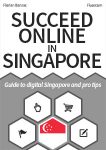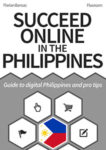The healthcare system of Singapore is widely recognized as one of the best in the world, while also being quite cheap. In this very clear video, Healthcare Triage presents the Singaporean healthcare system with its public and private dimensions, government regulations and policies, together with comparisons with other countries.
Singapore is a small and rich country governed by a single party that is very concerned about the Singaporean people’s welfare: these condition might help the implementation and regulation of an efficient healthcare system.
Nevertheless, though it details the Singaporean system from a somehow “American” perspective, this video will surely enlighten many people concerned about their health, doctors, healthcare professionals, companies and health insurers together with public workers and policy makers interested in innovation for healthcare in Asia.
Highlights of the Singaporean healthcare system
Responding to the concerns of its citizens, the ministry of health has doubled its budget a few years ago, and recently launched new directives to cover the poorest and less healthy: reduce people’s payments and increase the control on the increase of premiums.
Costing much less than the American system, the Singaporean healthcare system achieves great results through a mixed private and public funding: life expectancy, infant mortality and general mortality rates are among the best in the world.
Singapore spends about 4% of its GDP on healthcare (US: 18%, France: 11.6%). In 2009 Singapore spent about 2000 USD per person on healthcare, compared to about 7000 USD in the US.
In Singapore, about 2/3 of healthcare spending is private, and only about 1/3 is public (more private spending than in the US). Singapore provides a mix of private and public healthcare delivery systems, with public and private hospitals.
There are five classes of healthcare tiers to choose in Singapore: A, B1, B2+, B2, C. They range from the 100% privately paid and personally chosen service (A) to the most publicly paid, standard service, for which the government pays up to 80% of the costs.
The most unique part of the Singaporean system is that it relies on personal savings accounts, as all the people who work are required by law to save money for the future through different accounts:
- Ordinary account: housing, health hazards, education and investment
- Special account: used for old age and retirement financing
- Medisave account: healthcare and medical insurance, contributed by 7 to 9.5% of the salary depending on people’s age, earnings, interests and capped at 43,500 USD.
Concerned about the population growth rate, the Singaporean government has created various public family policies granting some specific financial benefits:
- for children with congenital conditions
- for each of the first and second children, Singaporeans obtain 6,000 USD; 8,000 USD for each of the third and fourth children
- within certain limits, the Singaporean government will double savings for children development accounts
From time to time, the Singaporean government distributes some extra money on the Medisave accounts to older or less well-off people.
Medishield is an optional program to cover catastrophic illnesses. Though it is not mandatory, more than 90% of Singaporeans use it, as it is very cheap. It is funded by savings that go beyond the payments required for each healthcare class, and it is limited to a coverage of 50,000 USD per year and lifetime limit of 200,000 USD, designed to cover the costs of a hospitalization.
Medifund is a safety net program designed exclusively for Singaporean citizens who have depleted their Medishield and Medisave accounts. It is prioritarily attributed to the elderly, depending on their family’s income, conditions, expenses and social circumstances.
Eldershield is a additional system run by three private insurers and funded from salary withdrawals from people aged 40 to 65. In such case as disability care, up to 400 USD per month can be taken out for up to 72 months of nursing and home care.
Several factors make the Singaporean healthcare system so cheap:
- when people have to use their own money, they tend to spend less on healthcare
- through the 5 healthcare tiers, the government keeps a lot of control on the use and costs of healthcare
- the private system challenges the public one, but the public system remains the dominant, standard one
Earlier experiments of a more privatized system led to increased costs of healthcare, as hospitals focused on servicing “A” classes; so the government got more involved. It fixed the proportions of each type of healthcare class, prevented hospitals to focus too much on profits, required them to obtain approval for the purchase of expensive technologies and regulated the numbers of doctors and controlled their salaries.
The Singaporean system is both private through the medical accounts and public through heavy regulation by the government. It is both regulated to keep costs down and liberally discriminating with the class systems that allows the wealthiest to obtain premium services. One of its most unique characteristics is that the Singaporean system is very open to change and able to try new things that can be scrapped later if they fail.
For more information and updates, visit the website of the Singaporean Ministry of Health.
Video published by Healthcare Triage in June 2014


![Overview of healthcare in Myanmar [market analysis] Healthcare in Myanmar](https://aseanup.com/wp-content/uploads/2015/04/Myanmar-healthcare-1-150x68.jpg)
![Overview of healthcare in Vietnam [market analysis] Healthcare in Vietnam](https://aseanup.com/wp-content/uploads/2016/03/Vietnam-healthcare-150x68.jpg)





